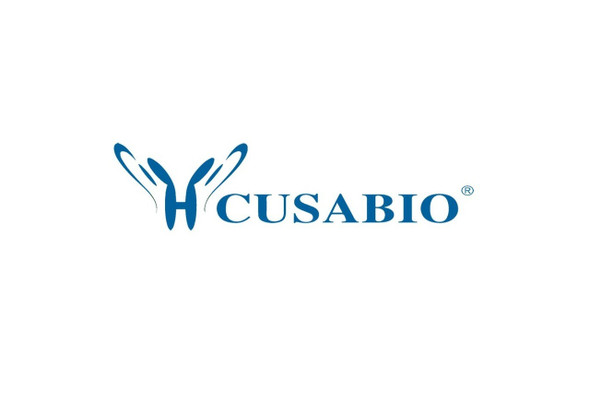Cusabio Virus & Bacteria Recombinants
Recombinant Calloselasma rhodostoma Thrombin-like enzyme ancrod | CSB-YP338742CBG
- SKU:
- CSB-YP338742CBG
- Availability:
- 3 - 7 Working Days
Description
Recombinant Calloselasma rhodostoma Thrombin-like enzyme ancrod | CSB-YP338742CBG | Cusabio
Alternative Name(s): ; Thrombin-like enzyme ancrod; SVTLE; EC 3.4.21.74; Fibrinogen-clotting enzyme; Snake venom serine protease; SVSP; Venombin A
Gene Names: N/A
Research Areas: Others
Organism: Calloselasma rhodostoma (Malayan pit viper) (Agkistrodon rhodostoma)
AA Sequence: VIGGDECNINEHRFLVAVYEGTNWTFICGGVLIHPEWVITAEHCARRRMNLVFGMHRKSEKFDDEQERYPKKRYFIRCNKTRTSWDEDIMLIRLNKPVNNSEHIAPLSLPSNPPIVGSDCRVMGWGSINRRIDVLSDEPRCANINLHNFTMCHGLFRKMPKKGRVLCAGDLRGRRDSCNSDSGGPLICNEELHGIVARGPNPCAQPNKPALYTSIYDYRDWVNNVIAGNATCSP
Source: Yeast
Tag Info: N-terminal 6xHis-tagged
Expression Region: 1-234aa
Sequence Info: Full Length
MW: 28.6 kDa
Purity: Greater than 90% as determined by SDS-PAGE.
Relevance: Thrombin-like snake venom serine protease that acts as an anticoagulant. It cleaves fibrinogen (FGA) to split off the A-fibrinopeptides (A, AY and AP), but not the B-fibrinopeptide. The resulting fibrin polymers are imperfectly formed and much smaller in size (1 to 2 um long) than the fibrin polymers produced by the action of thrombin. These ancrod-induced microthrombi are friable, unstable, urea-soluble and have significantly degraded alpha chains. They do not cross-link to form thrombi. They are markedly susceptible to digestion by plasmin and are rapidly roved from circulation by either reticuloendothelial phagocytosis or normal fibrinolysis, or both. Anticoagulation through the roval of fibrinogen from the blood is rapid, occurring within hours following its administration. It does not activate plasminogen and does not degrade preformed, fully cross-linked thrombin fibrin. It also reduces the level of plasminogen activator inhibitor (PAI) and may stimulate the release of tissue plasminogen activator (PLAT) from the endothelium. The profibrinolytic effect of these 2 actions appears to be limited to local microthrombus degradation.
Reference: Amino acid sequence determination of ancrod, the thrombin-like alpha-fibrinogenase from the venom of Akistrodon rhodostoma.Burkhart W., Simth G.F.H., Su J.-L., Parikh I., Levine H. IIIFEBS Lett. 297:297-301(1992)
Storage: The shelf life is related to many factors, storage state, buffer ingredients, storage temperature and the stability of the protein itself. Generally, the shelf life of liquid form is 6 months at -20?/-80?. The shelf life of lyophilized form is 12 months at -20?/-80?.
Notes: Repeated freezing and thawing is not recommended. Store working aliquots at 4? for up to one week.
Function: Thrombin-like snake venom serine protease that acts as an anticoagulant. It cleaves fibrinogen (FGA) to split off the A-fibrinopeptides (A, AY and AP), but not the B-fibrinopeptide. The resulting fibrin polymers are imperfectly formed and much smaller in size (1 to 2 um long) than the fibrin polymers produced by the action of thrombin. These ancrod-induced microthrombi are friable, unstable, urea-soluble and have significantly degraded alpha chains. They do not cross-link to form thrombi. They are markedly susceptible to digestion by plasmin and are rapidly removed from circulation by either reticuloendothelial phagocytosis or normal fibrinolysis, or both. Anticoagulation through the removal of fibrinogen from the blood is rapid, occurring within hours following its administration. It does not activate plasminogen and does not degrade preformed, fully cross-linked thrombin fibrin. It also reduces the level of plasminogen activator inhibitor (PAI) and may stimulate the release of tissue plasminogen activator (PLAT) from the endothelium. The profibrinolytic effect of these 2 actions appears to be limited to local microthrombus degradation.
Involvement in disease:
Subcellular Location: Secreted
Protein Families: Peptidase S1 family, Snake venom subfamily
Tissue Specificity: Expressed by the venom gland.
Paythway:
Form: Liquid or Lyophilized powder
Buffer: If the delivery form is liquid, the default storage buffer is Tris/PBS-based buffer, 5%-50% glycerol. If the delivery form is lyophilized powder, the buffer before lyophilization is Tris/PBS-based buffer, 6% Trehalose, pH 8.0.
Reconstitution: We recommend that this vial be briefly centrifuged prior to opening to bring the contents to the bottom. Please reconstitute protein in deionized sterile water to a concentration of 0.1-1.0 mg/mL.We recommend to add 5-50% of glycerol (final concentration) and aliquot for long-term storage at -20?/-80?. Our default final concentration of glycerol is 50%. Customers could use it as reference.
Uniprot ID: P26324
HGNC Database Link: N/A
UniGene Database Link: N/A
KEGG Database Link: N/A
STRING Database Link: N/A
OMIM Database Link: N/A










